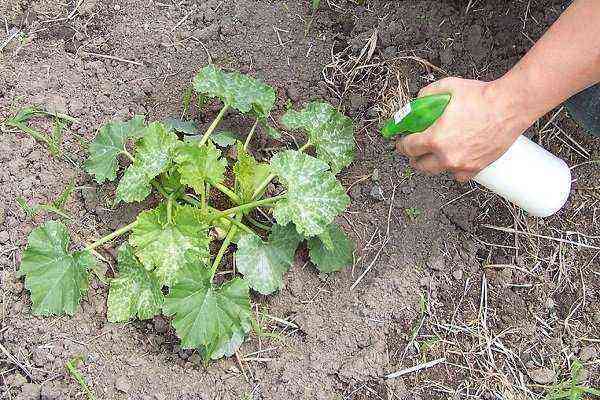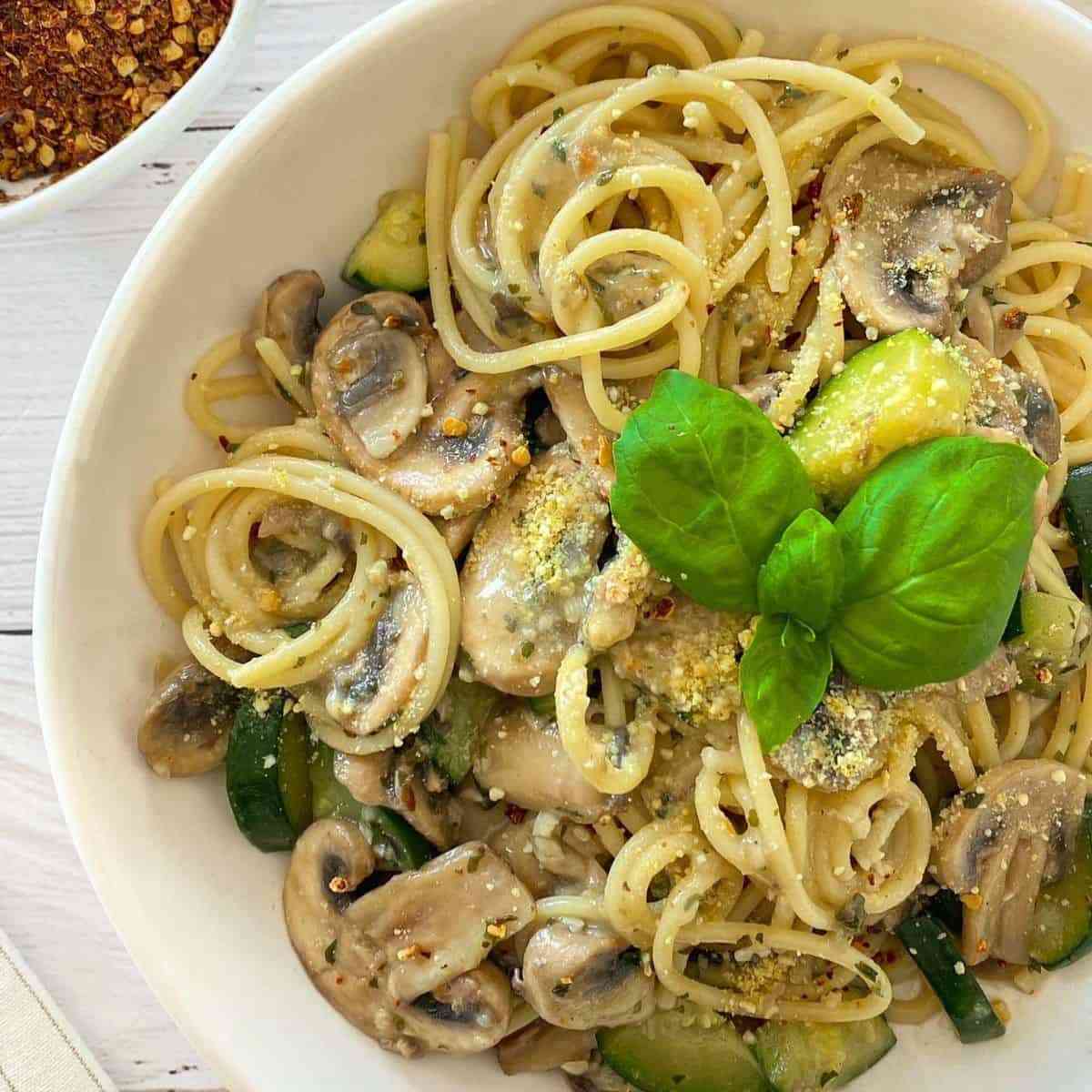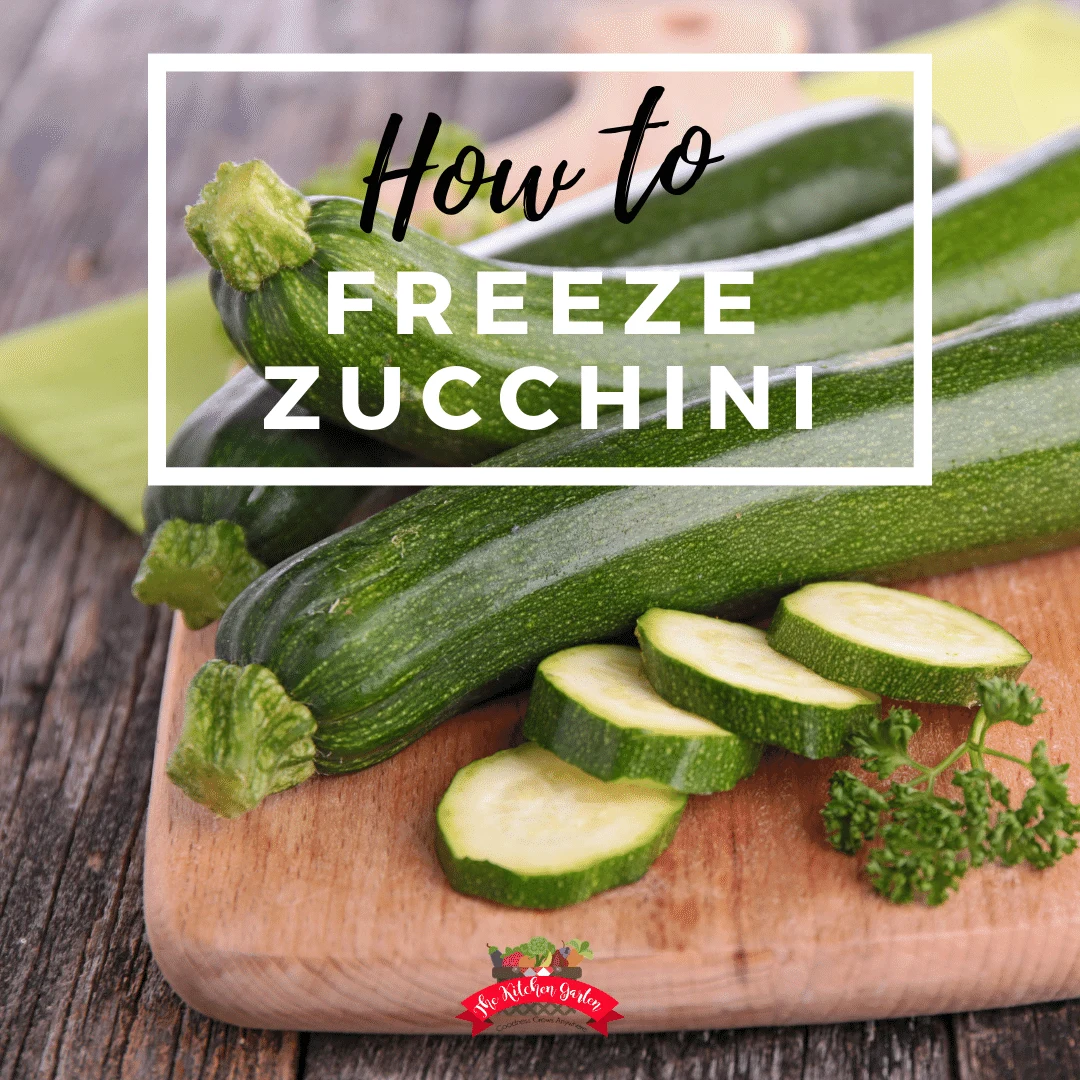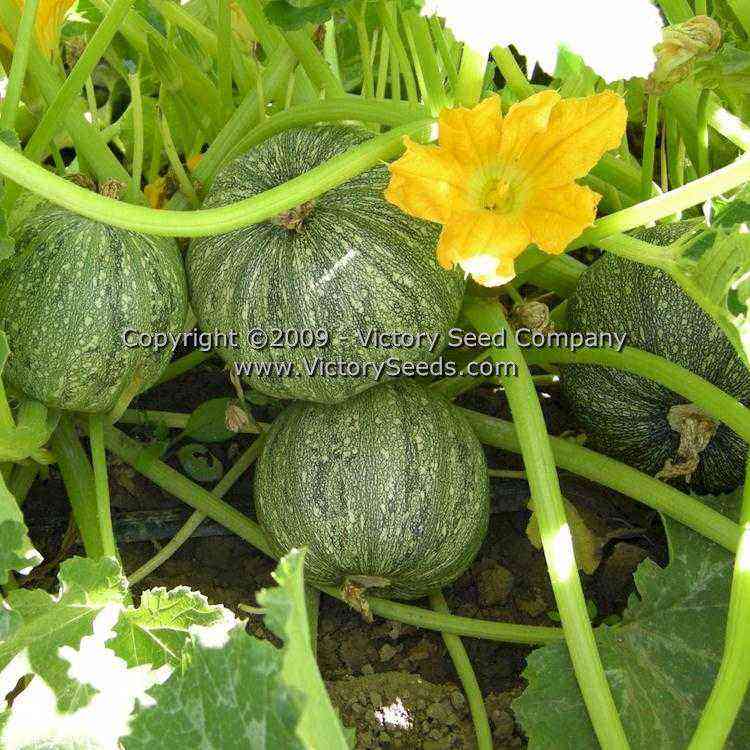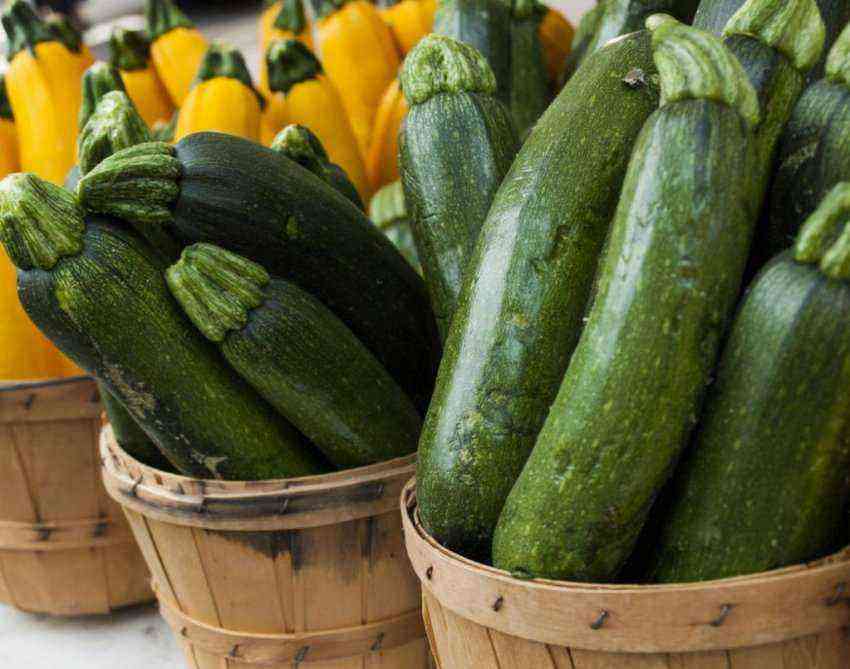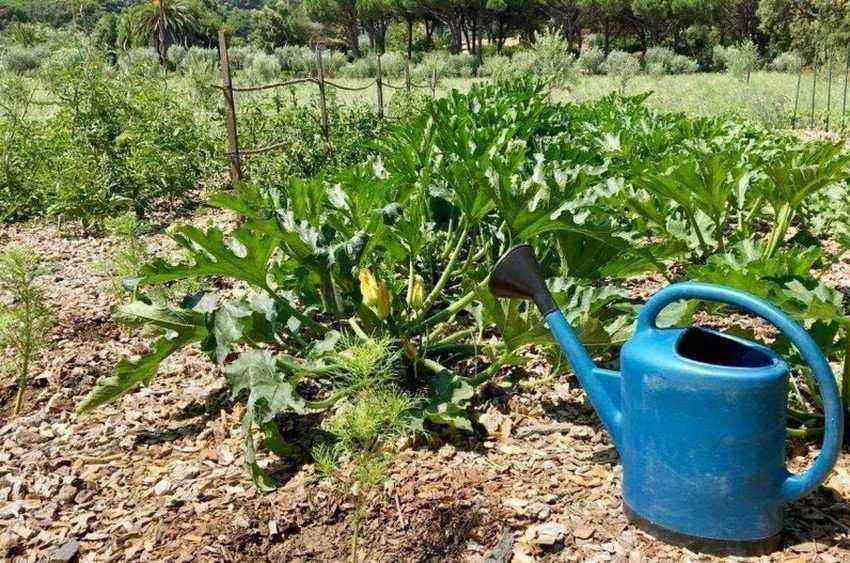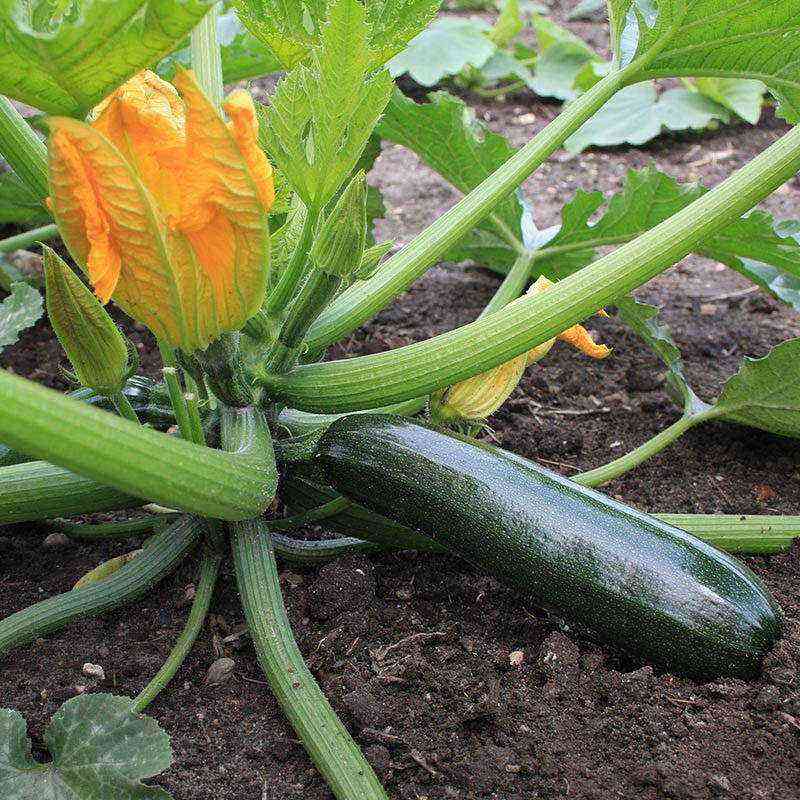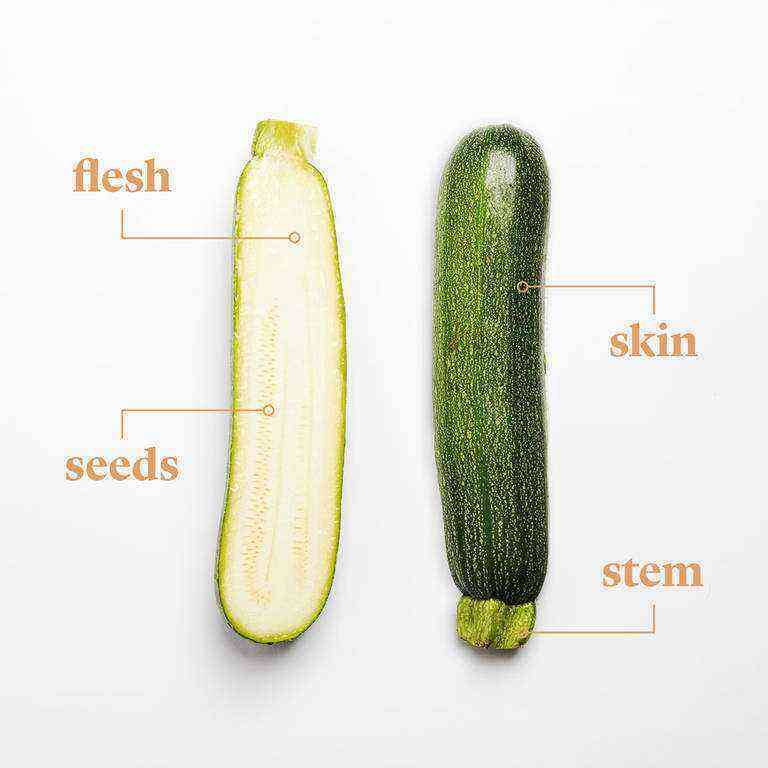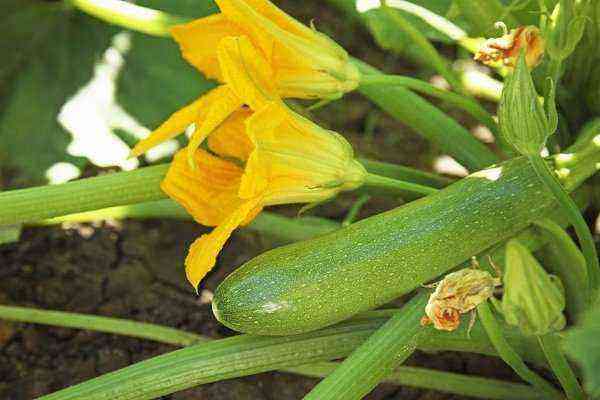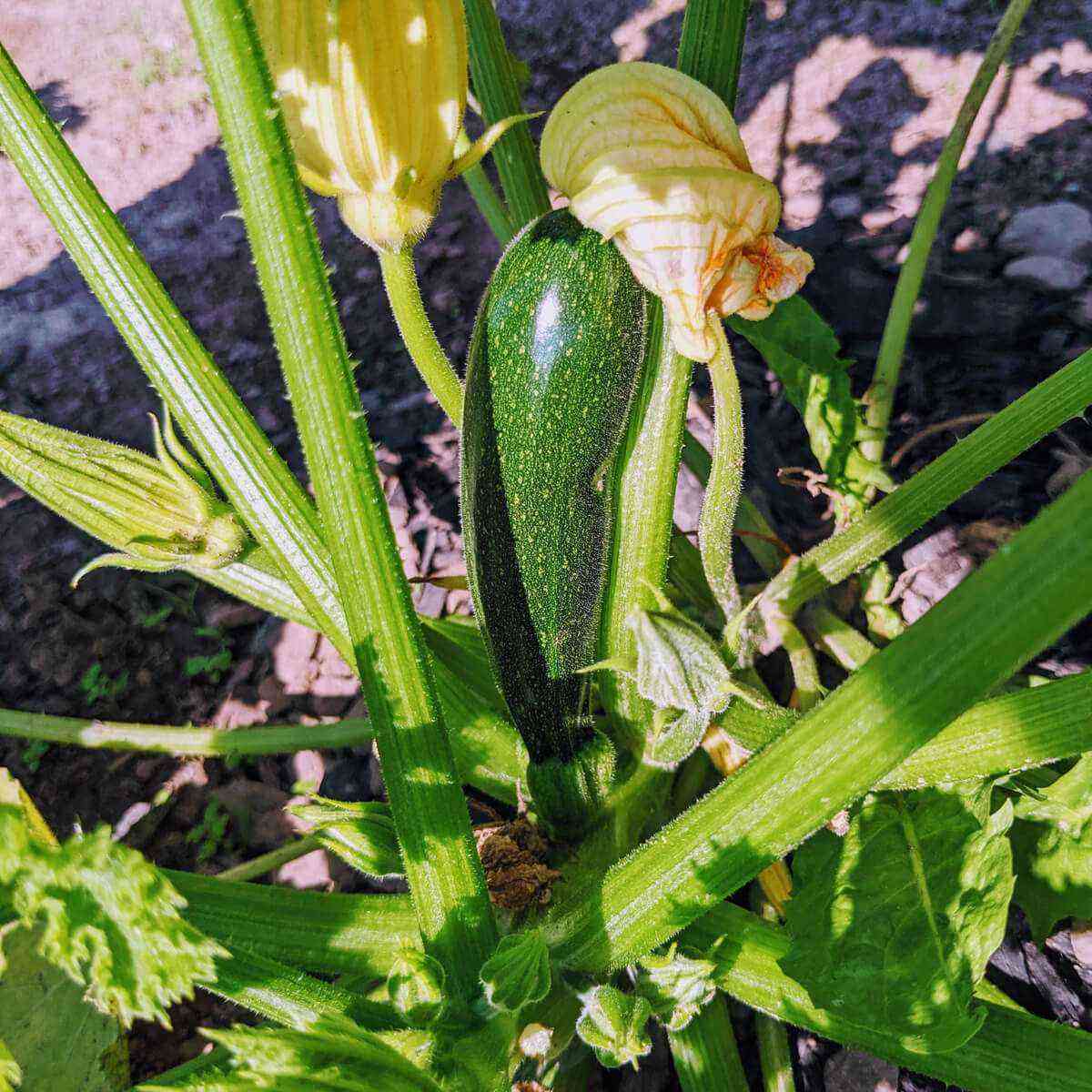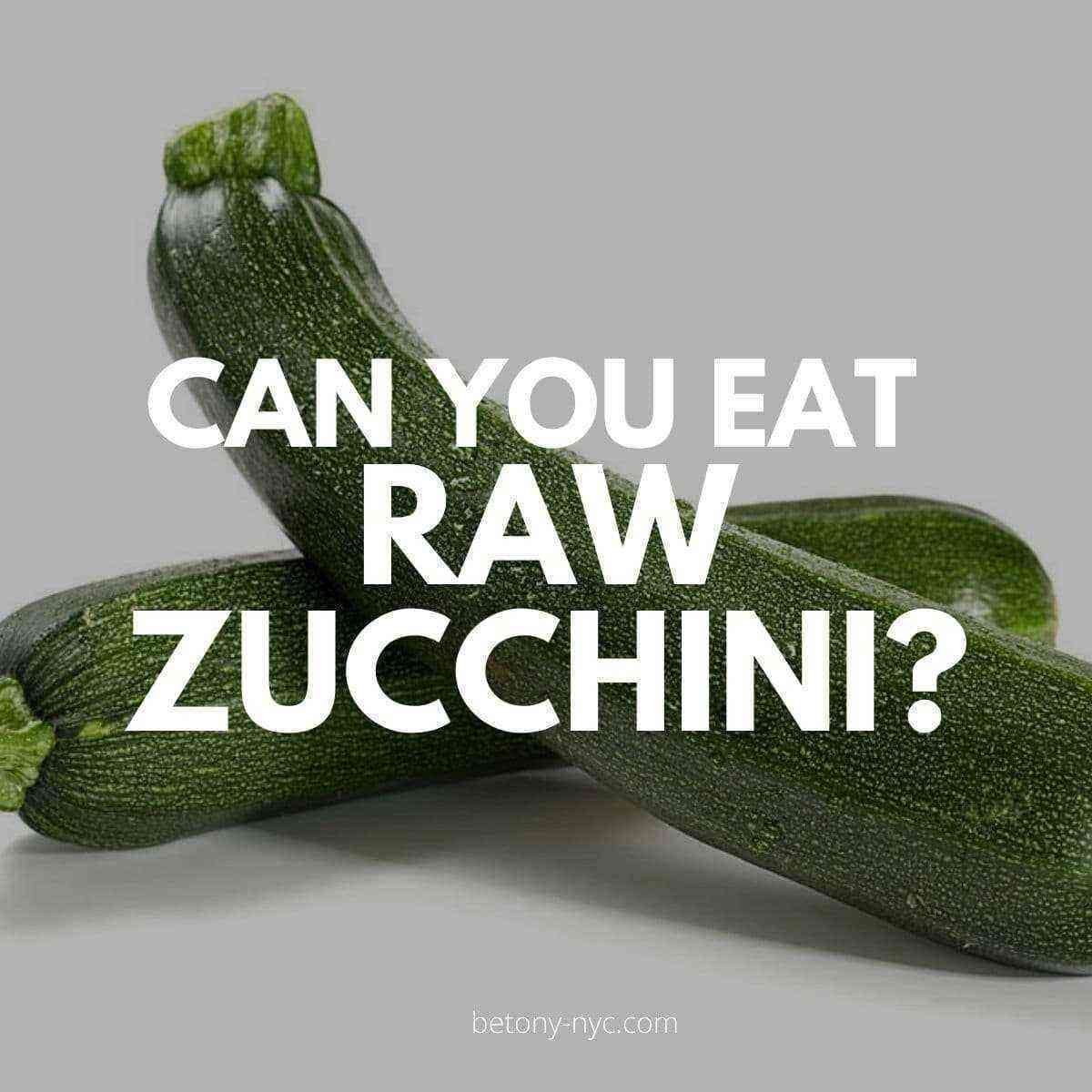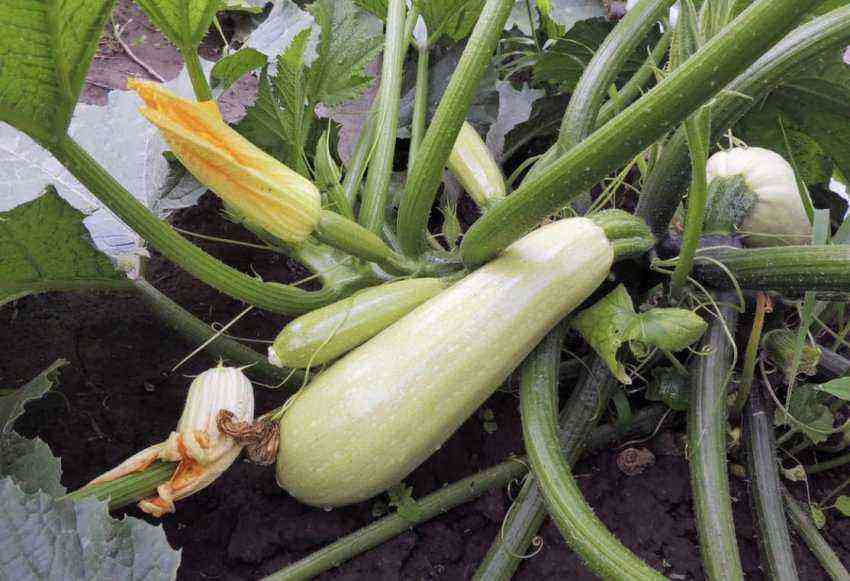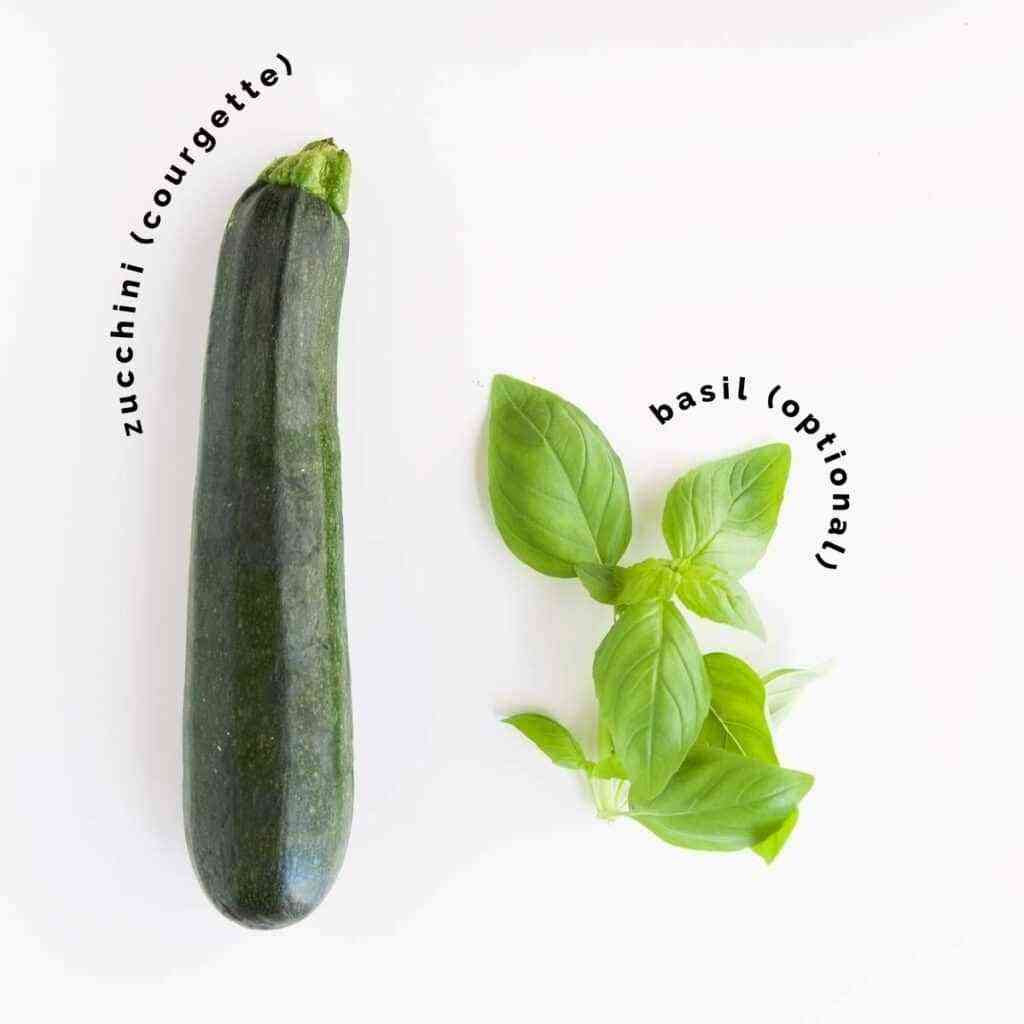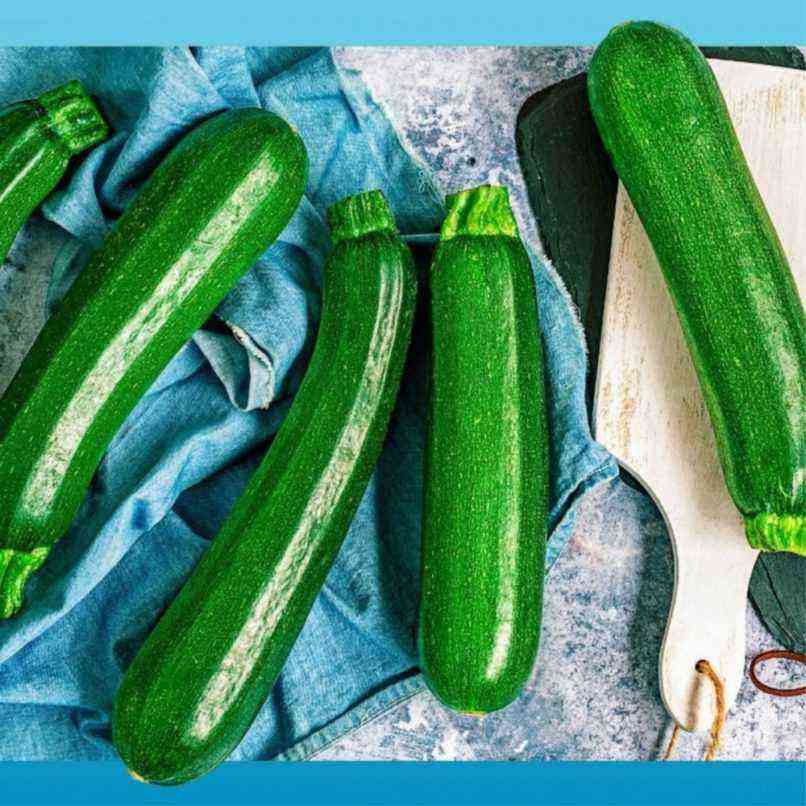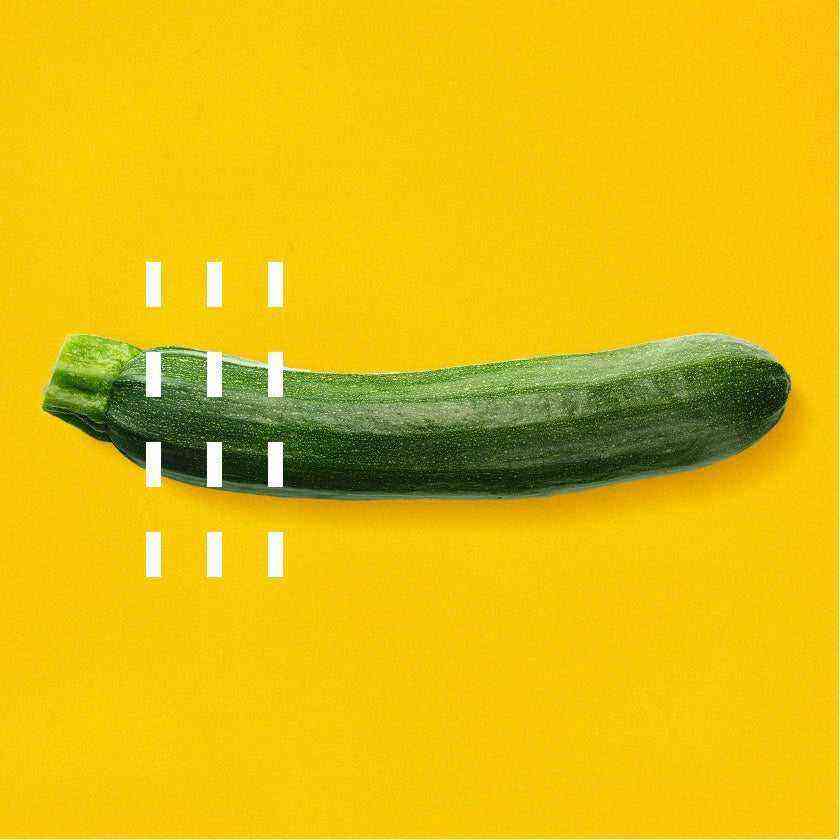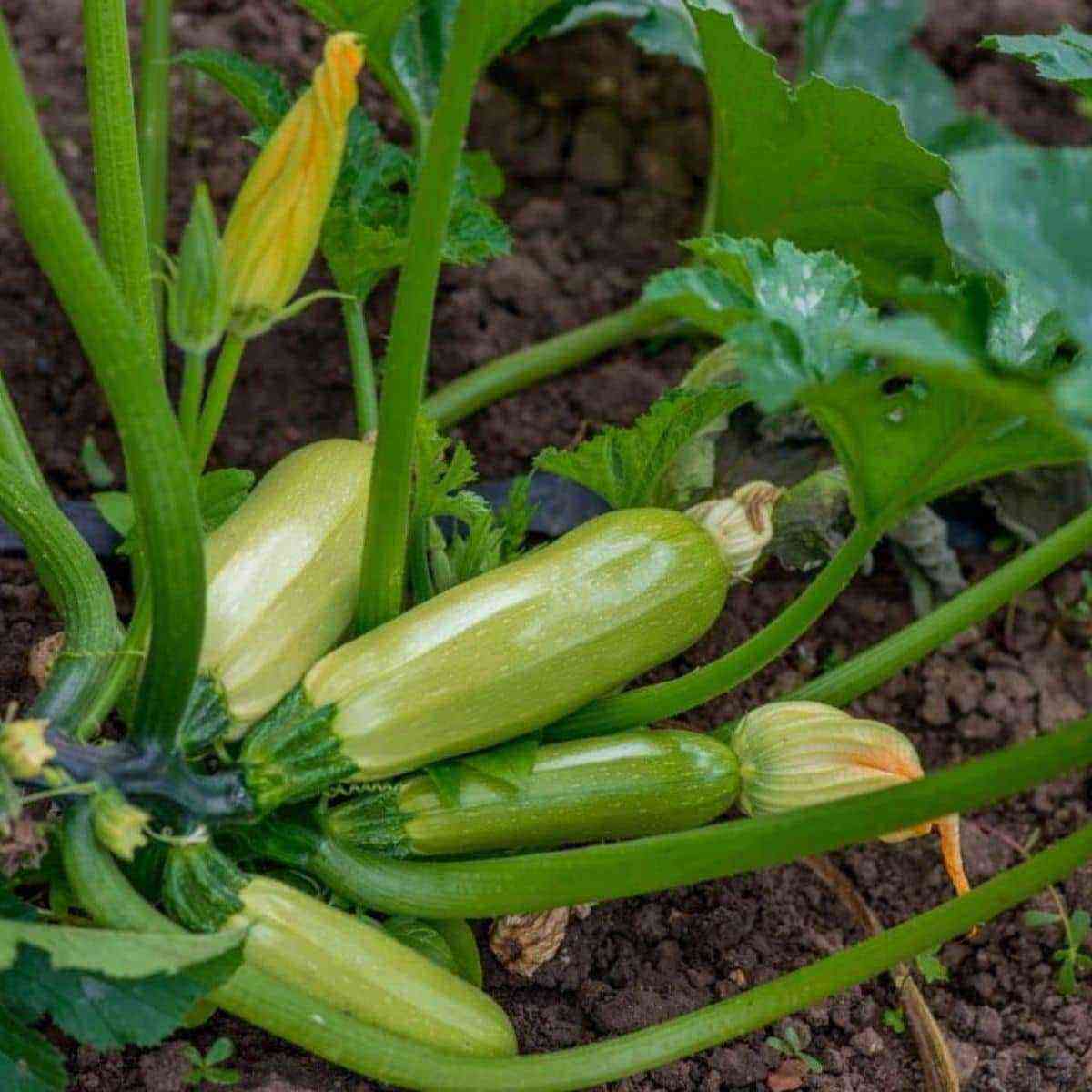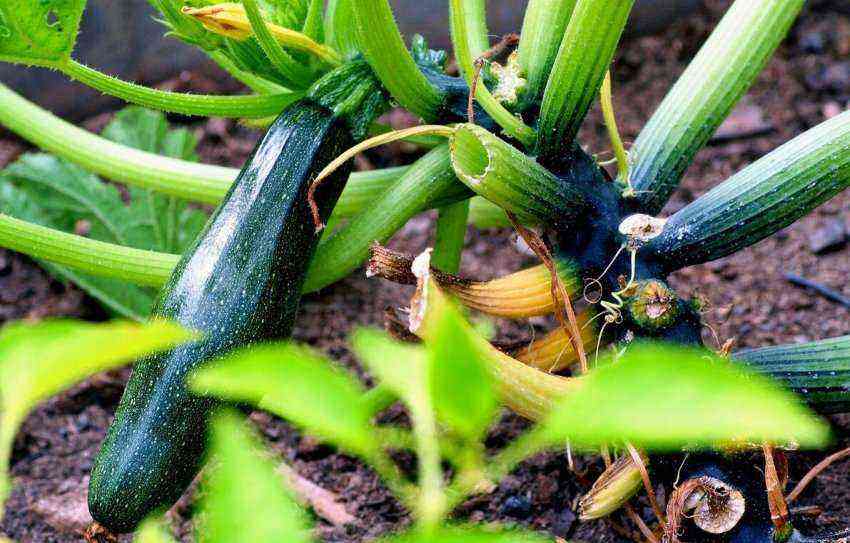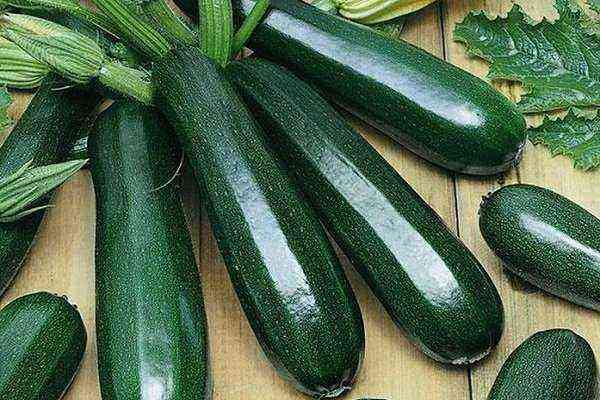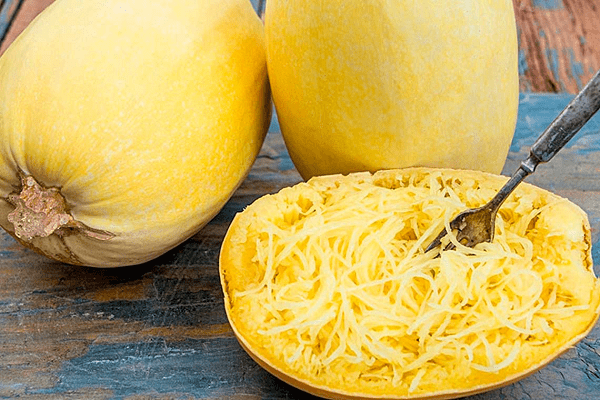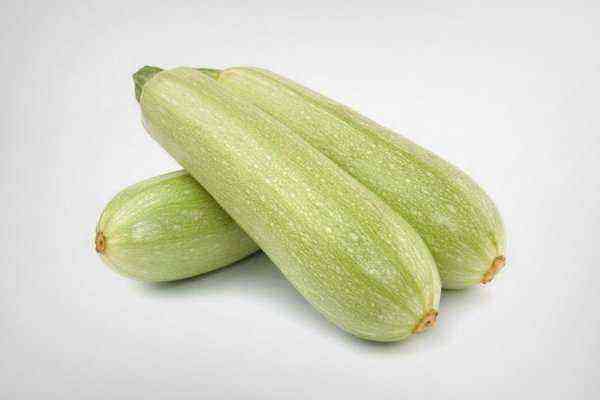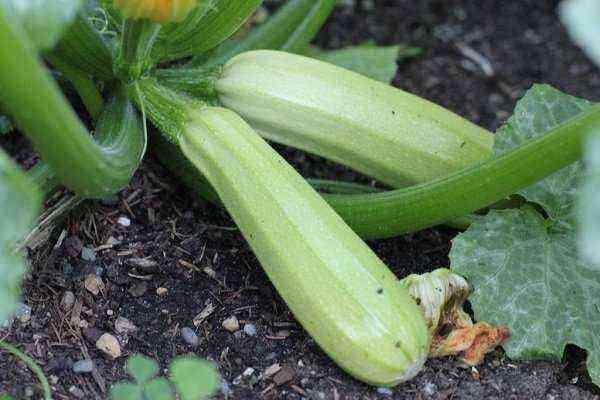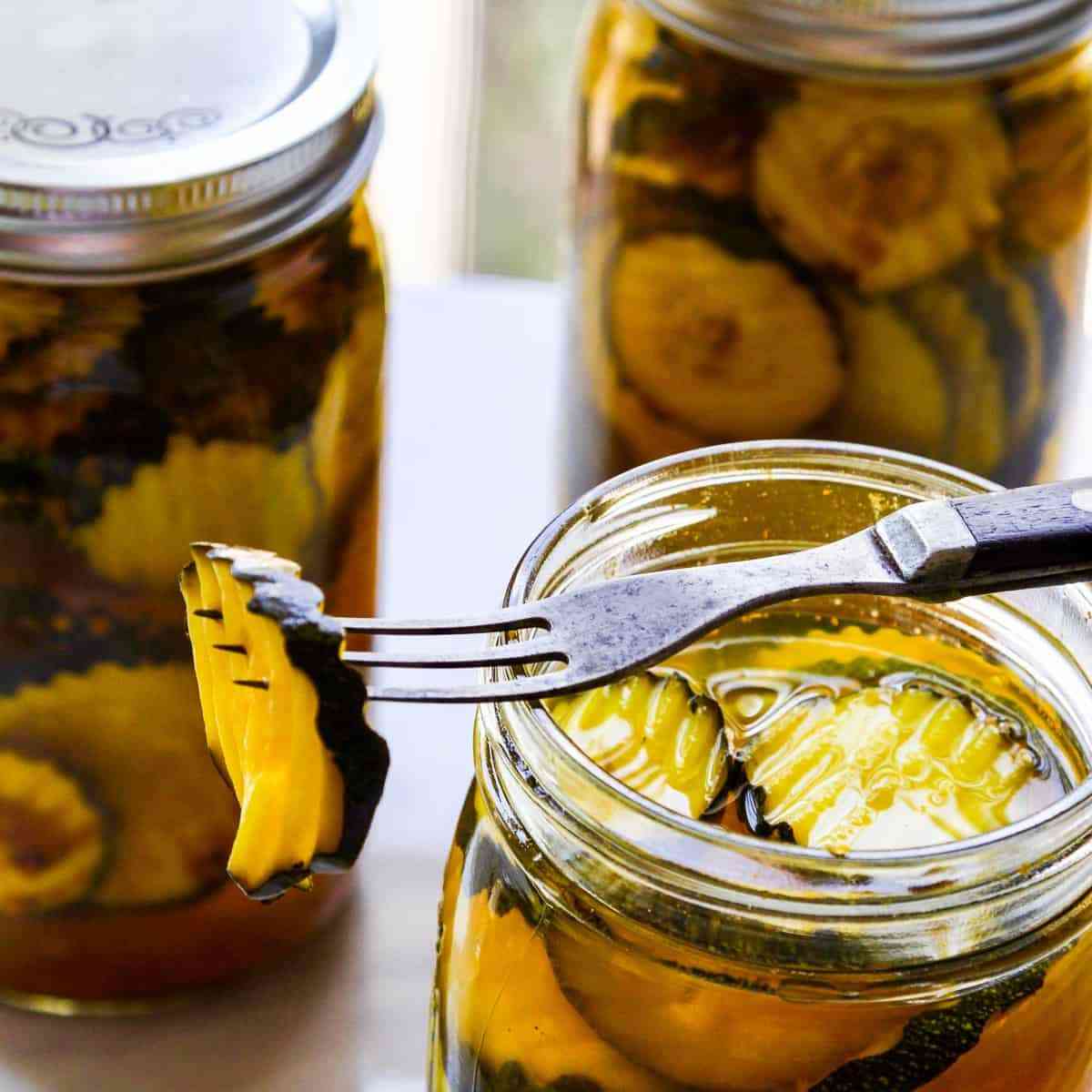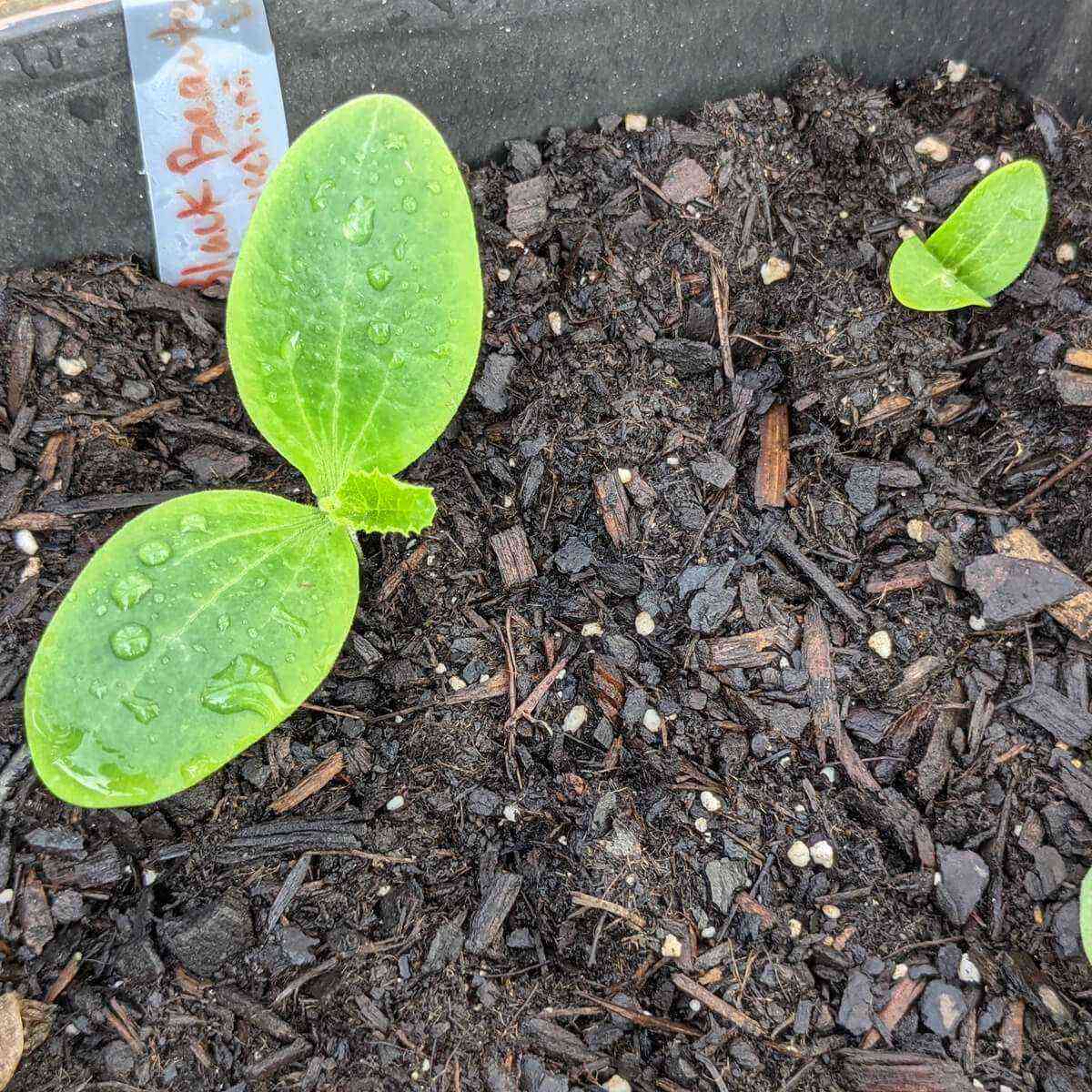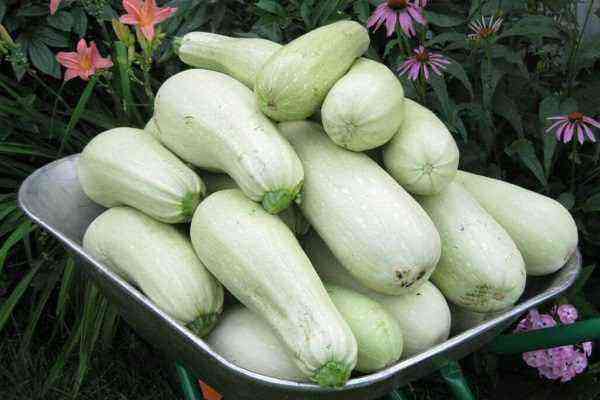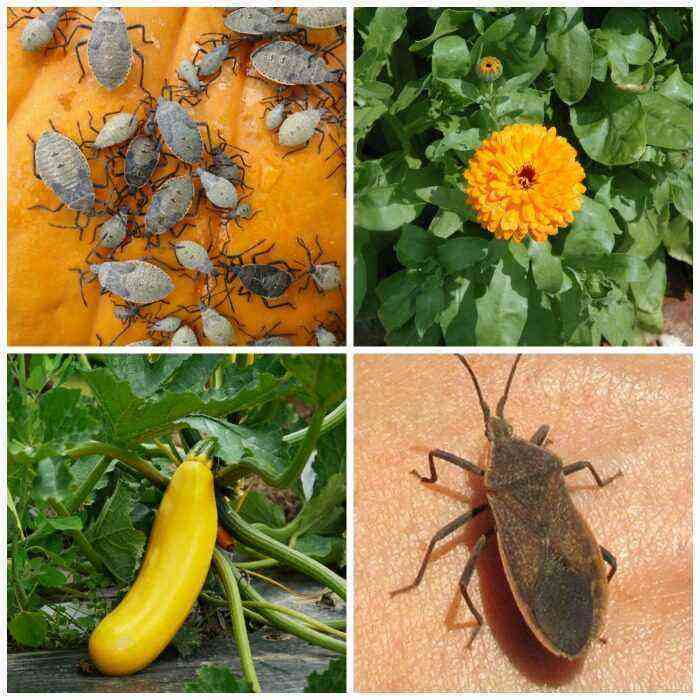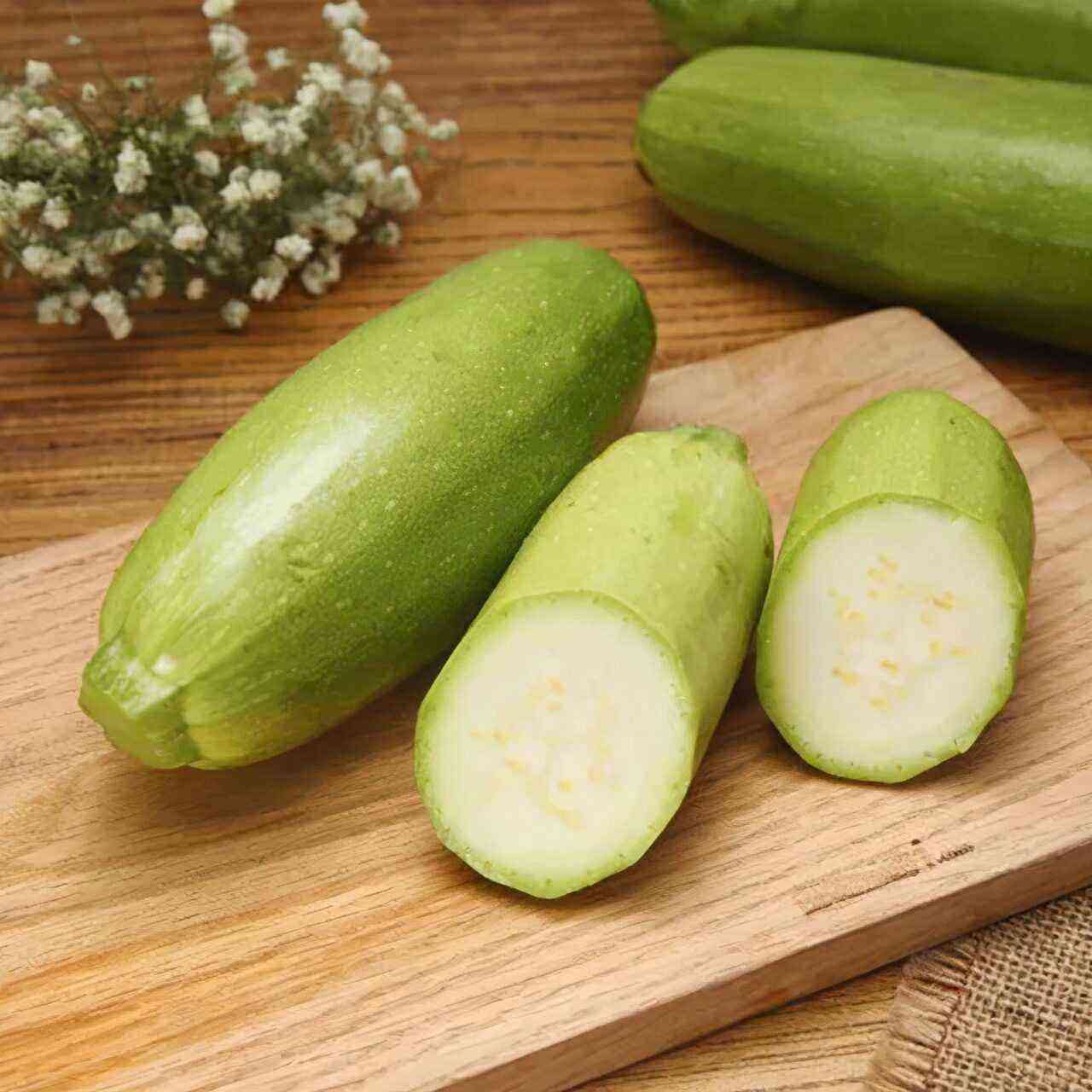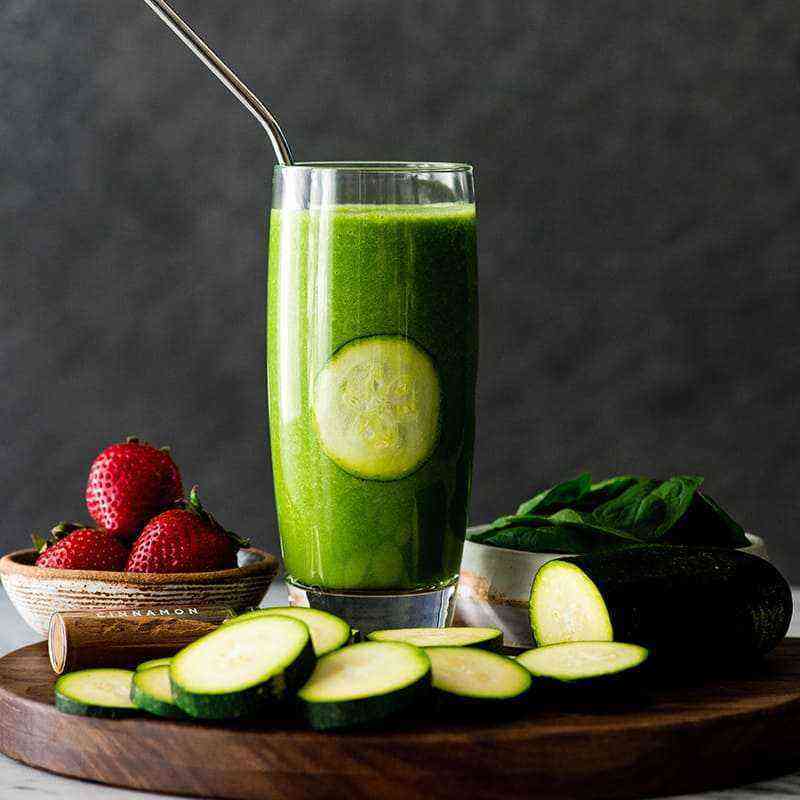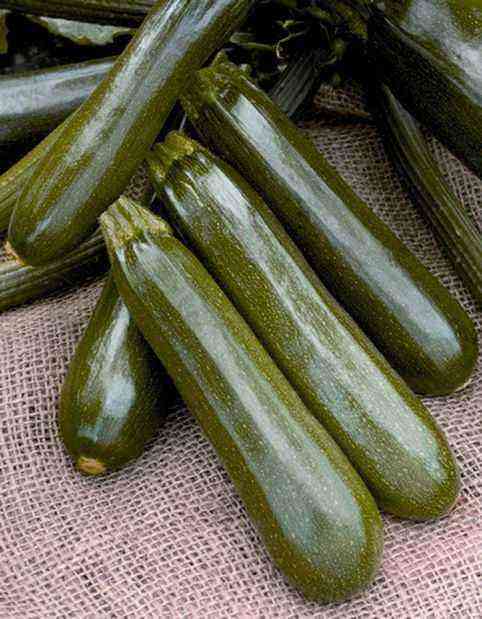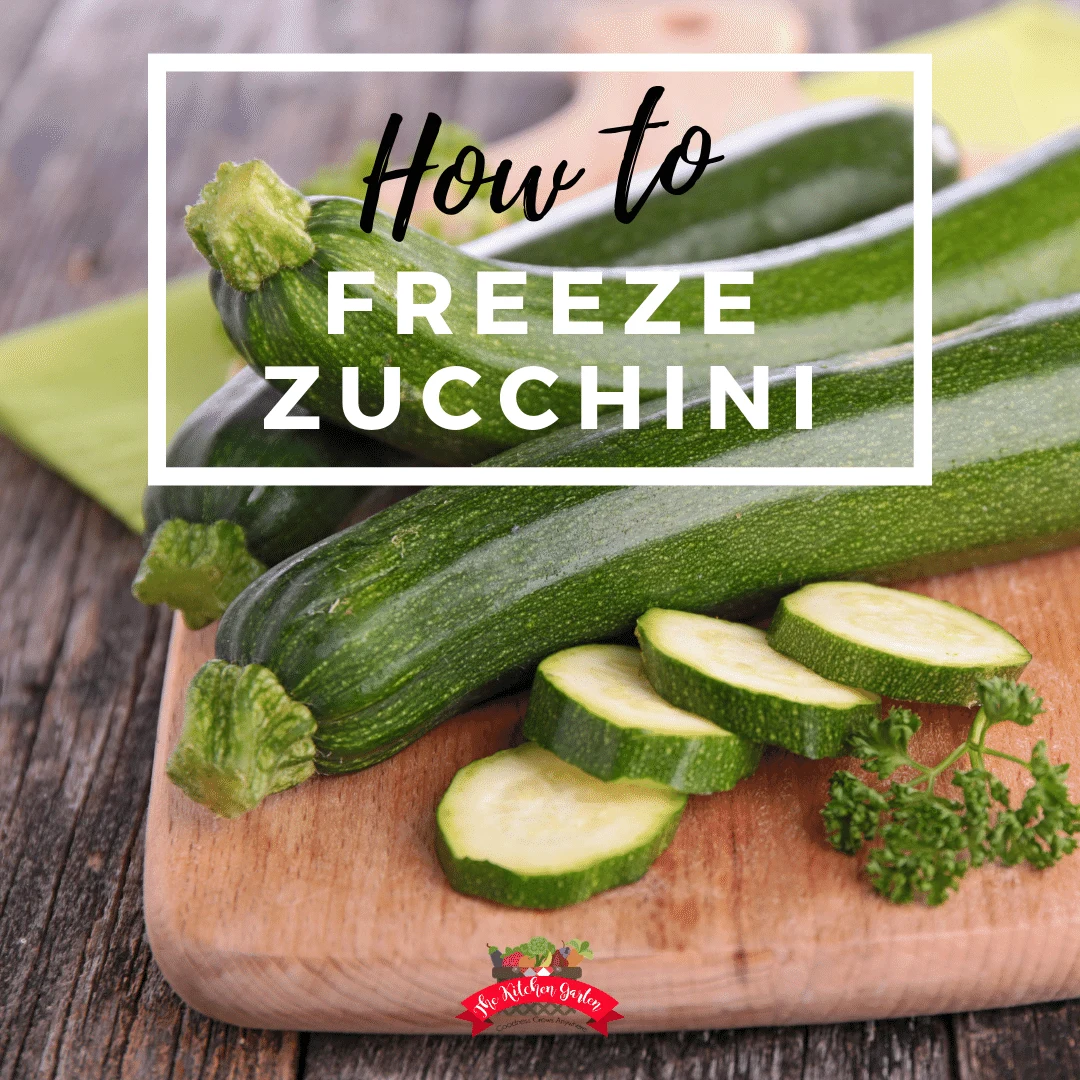Zucchini, distinguished by strong immunity, great vitality and productivity, is still not immune from the effects of negative factors. Most often, bushes react to them with yellowing of leaves, fruits, ovaries. Having noticed yellowness on any part of the plants, quickly determine the cause of this phenomenon and eliminate it.
Causes of yellowing zucchini
Yellowing of zucchini is permissible only in one case – if these are the features of the variety. In all other cases, a change in color from green to yellow indicates problems.
Non-compliance with crop rotation
Many gardeners often neglect the rules of crop rotation, believing that this agrotechnical requirement applies to large-scale farmland. In fact, the competent alternation of crops in the garden is an important condition for the successful cultivation of vegetables.
Zucchini cannot be planted after pumpkin crops:
- melon;
- cucumbers;
- squash;
- the zucchini themselves.
The minimum replanting interval is 3 years. Crops belonging to the same family take the same nutrients from the soil and leave pathogens in the soil that affect crops of the same genus.
Incorrect watering
Zucchini needs regular hydration. Violation of the irrigation regime negatively affects the condition of plants.
Causes of yellowing zucchini:
- plants are deficient in moisture;
- watering is excessive – the roots of the plants began to rot;
- the water is too cold or hard – this injures the underground processes;
- watering at the wrong time of day – during the high position of the sun.
How to water zucchini so that they do not turn yellow:
- water the beds as needed – as soon as the soil in the root zone dries up;
- do not allow the earth to dry out, nor water to stagnate;
- use water heated in the sun for irrigation;
- water the plants so that water does not fall on the leaves – burns may appear;
- water the zucchini in the morning or evening when there is no bright sun.
Lack of mineral elements
Lack of nutrition negatively affects the condition of plants, which immediately affects their appearance. Usually deficiency of mineral elements causes chlorosis. Plants droop, their leaves wither, the fruits turn yellow and separate from the shoots.
It is difficult to determine by eye which microelement is lacking in plants. Gardeners prefer to apply complex fertilizers that have all the necessary minerals that zucchini may need.
How to feed zucchini:
- Agricola;
- Diammophos;
- boric acid (1 g per 1 liter) – spray on the leaf;
- iodine (40 ml per 10 liters of water).
Foliar top dressing (spraying) is recommended to be carried out in dry and calm weather, in the morning or evening. If rain washes away the sprayed substance, the procedure must be repeated.
Overabundance of nutrients
Yellowing of the leaves is observed not only with a deficiency of nutrients, but also with their excess. Inexperienced gardeners fertilize too frequently (for good reason) and plants suffer as a result. The same type of top dressing is especially harmful.
Zucchini react extremely negatively to excess chlorine in the soil. Because of it, the fruits change color, become tasteless. Potassium chloride is recommended to be applied in the autumn. Instead, you can add potassium sulfate.
Manure is strictly not recommended to be applied in the spring; when planting seedlings, this can lead to a burn of the roots. It is better to add it in the fall, for digging.
Dense green mass
If zucchini grows on fertile soils rich in organic matter (nitrogen), they intensively increase their green mass. Thanks to large leaves, the plant is protected from overheating, but if there are too many of them, the normal air exchange of the bush is disturbed.
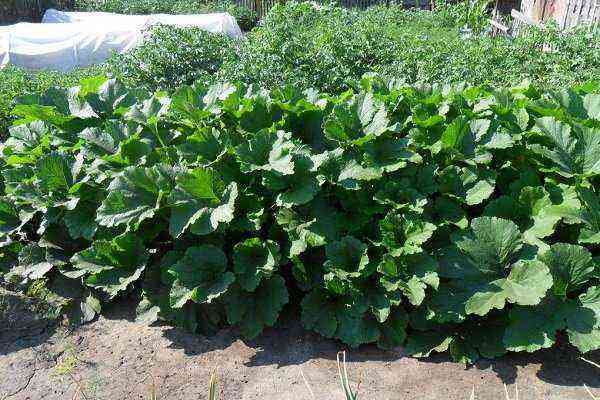
If the outlet is too lush, the evaporation of moisture is delayed, and a favorable environment is created for the development of fungal infections.
How to fix the problem:
- Remove a few large leaves located above the fruit.
- Slices of petioles must be sprinkled with wood ash or activated charcoal to prevent infection.
It happens that rotting flowers infect the fruits – their tips deteriorate. To prevent this from happening, carefully pick off all the flower petals as soon as the fruits form.
So that the leaves of the bushes do not close, and the plantings are not overly thickened, it is important to follow the growing scheme when planting – 70-80 x 90-100 cm.
Why do the ovaries of zucchini turn yellow?
If too many ovaries have formed on the zucchini bushes, some of them dry out, since the bush is able to feed a limited number of fruits. The plant itself regulates the number of ovaries, based on its capabilities.
If too many of them dry out, there is cause for concern. It is important to find the cause of this situation and eliminate it.
Water scarcity and extreme heat
Zucchini is drought tolerant, as they are able to accumulate moisture in the stems and leaves. But, if plants regularly experience a lack of moisture, their ovaries turn yellow and fall off. A similar phenomenon in relation to young fruits causes heat – an increase in temperature to + 40 ° C.
High temperatures literally boil young zucchini. They soften, acquire a cotton structure. A fabric canopy that protects plants from direct sunlight helps to avoid damage to the crop. Also in the heat, increase the rate of watering.
vermin
One of the reasons for the yellowing of the ovaries, followed by their fall. Various pests can provoke such a situation. These are mainly insects that feed on plant sap.
Yellowing and falling of the ovaries can occur due to the following pests:
- Spider mite. Small sucking insects spinning webs suck juices from leaves and shoots. They multiply intensively with a lack of water and in extreme heat. It is recommended to spray plantings with Iskra, Fitoverm and other insectoacaricides.
- Aphid. They live in colonies on the reverse side of the leaves. They suck juices from plants. Bushes slow down growth, dry out, ovaries turn yellow and fall off. Treatment with solutions of wood ash (300 g per 1 l) or soap (200 g per 10 l) is recommended.
- Whitefly. Small moths, the larvae of which suck the juices from the aerial parts of plants. Bushes are recommended to be watered with a jet under pressure to bring down pests. Spraying with a solution of grated laundry soap is also effective (the same proportion as against aphids).
Lack of pollination
To form a fruit, plants need pollination, in which pollen is transferred from male flowers to female ones. Usually this mission is performed by insects. But they do not fly if the weather is cold and wet. The flowers are not pollinated, and the ovaries dry out, the fruits do not form.
In order not to lose the crop, gardeners must independently pollinate the plants. To do this, pick the male flowers and run their stamens over the female pistils. It is not difficult to distinguish a male flower from a female one – it has longer and thinner legs. In female flowers, the ovary is visible from under the petals.
For male flowers used for pollination, remove the petals before pollinating. One bud can pollinate 2-3 female flowers.
How to attract insects to the garden:
- plant flowers with a strong smell next to the beds;
- spray the bushes with a solution of honey / sugar – 1 tbsp. l. for 1 liter of water;
- cut off the leaves covering the flowers.
Planting parthenocarpic varieties helps to get rid of the problem of pollination. They do not require pollination to develop ovaries. These are hybrids. Unlike ordinary varieties, their fruits do not have seeds.
Causes of yellowing leaves
Leaf yellowness is a common occurrence when growing zucchini. Such a reaction is usually observed in violation of agricultural cultivation and various diseases.
Early landing and cold weather
Zucchini have powerful bushes with great growth power. At the same time, their leaves, even to the touch, are tender and loose.
Spring cooling and temperature changes negatively affect the condition of plants, weaken their immunity, and provoke diseases. One of the most common symptoms is yellowing of the leaves.
Timely planting of zucchini helps to avoid problems. Don’t plant them too early. Early planting causes heat-loving culture to suffer from a lack of heat. In plants, the formation of chlorophyll slows down.
Zucchini grow quickly. They have time to give a harvest, even if they are planted in June in open ground. Plant zucchini in greenhouses in early May. Until stable weather is established, it is recommended to cover the seedlings with agrofibre.

Lack of micro and macro elements
Lack of nutrition is the most common cause of yellowing leaves in zucchini. According to the nuances of coloring, an agronomist determines which element the plants lack. Ordinary gardeners do not delve into such subtleties, and they are advised to solve the problem with the help of complex fertilizers.
Signs of deficiency of macro- and microelements:
- if the bushes turn yellow leaves of the first tier, most likely they need phosphorus, magnesium, potassium, nitrogen;
- yellowing of the leaves in the upper part of the plants indicates a lack of iron, boron, manganese.
Top dressing helps to solve the problem:
- Ferovit and Antichlorosis from iron chlorosis. These products contain copper sulfate and citric acid.
- Agricola and Diammofoska. These complex fertilizers contain a lot of nitrogen, phosphorus, potassium, boron, copper, zinc, iron, manganese.
You can solve the problem of trace element deficiency with the help of folk remedies:
- Yeast. Saturate the soil with vitamins, enzymes, minerals, amino acids. Effective only in warm soil.
- Boric acid. Used for boron deficiency. Promotes rooting of seedlings and increases immunity of plants. Dilute 5 g in 10 liters of water. Spray on the leaf.
- Wood ash. Apply with a lack of potassium. For 1 sq. m – 200-300 ml.
The occurrence of non-infectious chlorosis is possible when a crust appears on the surface of the earth. To prevent this from happening, it is important to loosen the aisles in a timely manner.
High acidity of the soil
Zucchini does not grow well in acidic soils. An acidity level of around 5,5 pH is considered too high. The negative consequences of growing on acidic soils appear a few days after planting. Seedlings lose their ability to absorb food normally.
Zucchini planted in acidic soils wither and dry out. Deoxidation helps to prevent this phenomenon, which is carried out using wood ash or lime – 200 g per 1 sq. m.
Violations of agricultural technology
Yellowing of leaves in zucchini often occurs when agricultural practices are violated. Any neglect of the rules for growing this crop can provoke this phenomenon.
What violations of agricultural technology cause yellowness of the leaves:
- Lack of light. If the squash beds are placed in shading, the stems stretch out and become thinner. The leaves turn yellow, few flowers and ovaries are formed.
- Wrong watering. Zucchini needs a lot of moisture, but without standing water in the beds. To prevent the leaves from turning yellow, water the plants regularly, in the mornings and evenings. At the same time, water should not fall on the leaves.
dense landing
Zucchini have large leaves that, when planted too densely, block sunlight from each other. In addition, in too dense plantings, plants begin to compete for food.
Thickening causes not only yellowing of the leaves, but also provokes various diseases, primarily fungal ones.
Observance of the zucchini planting scheme helps to avoid the problem:
- distance between plants – 70-80 cm;
- distance between rows – 90-100 cm.
If the leaves still turn yellow, carefully remove them. Sprinkle cuts/breaks with wood ash to prevent infection.
The cause of thickening can also be the excessive growth of leaves, which is observed when organic matter and nitrogen fertilizers are applied, which provoke the growth of green mass. To prevent this from happening, the mentioned fertilizers are recommended to be applied in autumn and early spring, before the start of a stormy vegetation.
disease
Zucchini, like any garden crop, is attacked by insects and affected by diseases. One of the symptoms of damage is yellowing of the leaves. The peculiarities of the spread of yellowness across the leaf help to diagnose the problem.
Downy Mildew
The causative agent of the disease is a fungus that becomes especially active in conditions of high humidity. You can identify the disease by the many yellow spots that turn brown over time.
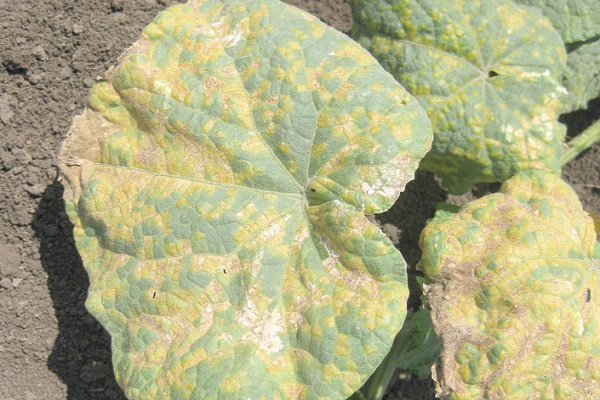
The leaves dry up, curl up, and then crumble. The fungus infects the entire bush, which eventually dies if no action is taken.
The disease is recommended to be prevented by preventive spraying. For this purpose, use Bordeaux liquid 1%, which is used to treat seedlings. It is also recommended to treat the seeds before planting. If signs of illness appear, use sulfur preparations.
Chlorosis
This pathological condition usually occurs when there is insufficient oxygen supply to the roots of plants. With chlorosis, the leaves become covered with light yellow spots, which dry out over time.

Helps prevent chlorosis and yellowing of leaves:
- regular loosening of the soil;
- the introduction of wood ash – 200 g per 1 sq. m;
- top dressing with a decoction of onion peel – 1 liter of raw materials per 10 liters of water;
- application of potassium-phosphorus fertilizers – 30-40 g per 1 sq. m.
Fusarium wilt
The disease is caused by soil fungi that can infect zucchini bushes at any stage of the growing season. First, the root suffers, then the disease spreads throughout the plant. Its leaves turn yellow and wither, yield drops.
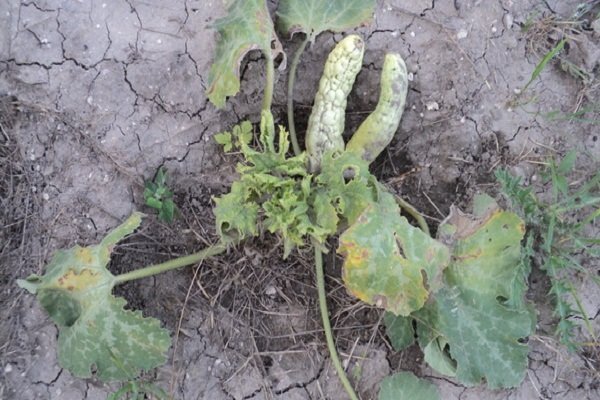
With Fusarium, the leaves in the upper part of the bushes are the first to turn yellow and weaken. Near the roots, the stems become brown, a pink-orange bloom appears on them. The disease affects the roots, and the plant soon dies.
If you identify the pathology at an early stage, there is a chance to save the zucchini. Dust them and the surrounding ground with wood ash first. Subsequently, you have to deal with the improvement of the soil – gardeners make calcium preparations and fertilizers, grow green manure.
cucumber mosaic
The viral disease affects all melons and gourds. It can be identified by the characteristic mosaic pattern covering the leaves. It consists of spots of white and yellow color of different intensity.
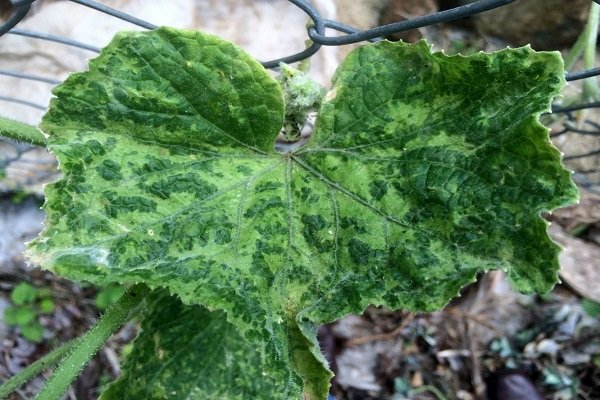
Affected plants lag behind in growth and do not produce a crop. There is no cure, the only hope is prevention.
How to prevent mosaic:
- water the beds regularly;
- follow the rules of crop rotation;
- destroy infected bushes;
- pickle the seeds;
- disinfect the working tool;
- remove and dispose of plant debris.
It is recommended to spray the plants with laundry soap dissolved in milk (200 g per 10 l) for the prevention of mosaics.
vermin
Yellowing of the leaves can also cause damage caused by pests:
- Tloy. It sucks juices from leaves, weakens and even destroys plants, and spreads viral infections. Fight aphid colonies with insecticides – spray plantings with Akarin, Fitoverm or their analogues.
To combat aphids, also use folk remedies – an infusion of onion peel (100 g per 3 liters of boiling water). Infuse for 5 hours and add up to 10 liters.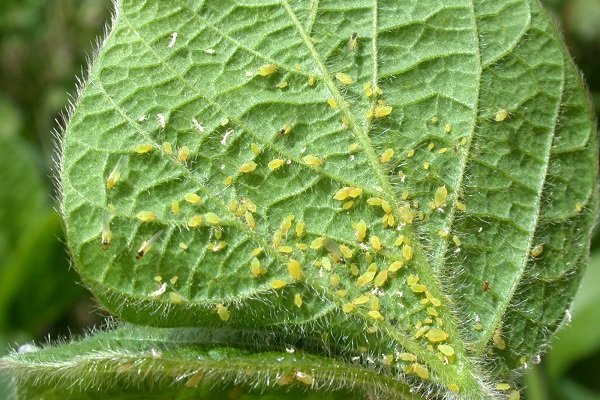
- Spider mite. A small insect destroys zucchini both outside and inside. You can identify the infection by a thin web that entangles the leaves, which become mosaic. They turn yellow and die. Spraying with Fitoverm, Neoron and other insectoacaricides is recommended.
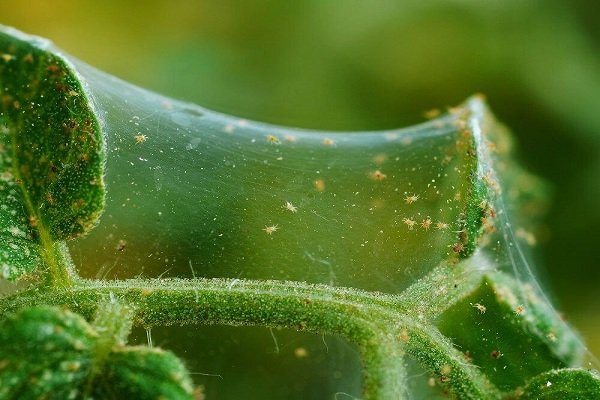
- Slugs. Pests can gnaw stems, weaken plants, causing yellowing of leaves. And they can eat the leaves themselves. To scare away slugs, gardeners plant odorous plants next to zucchini – garlic, mustard, pepper. Or scatter ground superphosphate around the bushes.
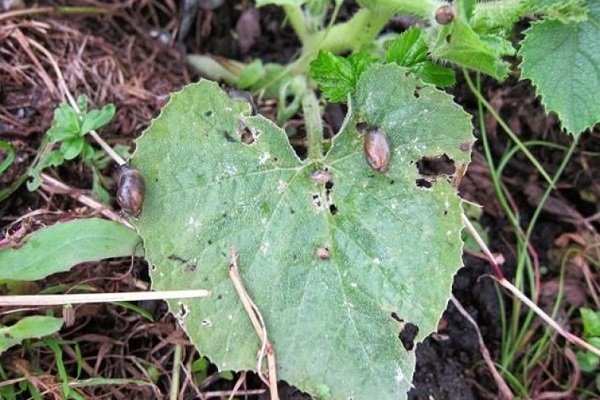
Yellowing of squash seedlings
Zucchini cannot be called a capricious crop, but their seedlings require attention no less than, for example, tomato. To grow strong and healthy seedlings, you have to create the most favorable conditions. Otherwise, the seedlings get sick, turn yellow and even die.
Incorrect watering
Yellowing seedlings can provoke improper watering. Equally harmful to her are both rare and too frequent watering, both scarce and excessive. It is important to focus on the state of the substrate – it should be slightly moistened all the time, but there should not be stagnation of water either.
If the seedlings do not receive enough water, they wither, turn yellow and dry out. When waterlogged, the roots of seedlings rot. They can get sick with the most dangerous disease for seedlings – the black leg. The disease is not cured, it kills the seedlings on the spot.
Too small capacity
When growing seedlings, a small container is used, exactly such that there is enough space and nutrition for the seedling. If the planting is delayed, the seedlings begin to feel discomfort – the glasses become too small for them. If the seedlings have little space and nutrition to grow, their leaves turn yellow.
Urgent picking helps to save the situation – transplanting seedlings into a new, more spacious container. The main thing is not to damage the roots of plants during the process.
short daylight hours
Zucchini requires at least 11 hours of daylight. If the landing is made in April, additional lighting is usually not turned on – natural light is enough. The lack of sun can be observed due to the dense plantings or with a strong distance from the windows.
With a lack of light in plants, the processes of photosynthesis are inhibited, the leaves turn pale, the plants are drawn to the light, weaken. This can be avoided by observing the landing pattern and the correct placement of the container in relation to the light source.
Sunburn
Zucchini love light, but tender seedling leaves can suffer from direct sunlight. To prevent this from happening, do not put seedlings on the southern windowsills. Also, sunburn can occur due to water getting on the leaves – carefully water the plants under the root.
Failed transplant
If yellowing of seedlings is observed immediately after transplantation, there is reason to believe that it was unsuccessful. Most likely, during the transfer of seedlings from container to container, the root system was damaged, and the plants cannot receive normal nutrition.
The treatment of transplanted seedlings with growth and root formation stimulants helps to solve the problem. Apply:
- Kornevin;
- Epin;
- Zircon;
- succinic acid.
Preventive measures
Yellowing of zucchini is far from always fatal, especially for adult plants, but it necessarily leads to crop losses. In difficult situations, the gardener can lose both bushes and fruits. It is much more profitable to prevent losses than to deal with the consequences of diseases, violations of agricultural technology, etc.
Preventive measures:
- Variety selection. It is better to plant zucchini that are resistant to fungal diseases – Tsukeshu, Chakluna, Skvorushka.
- Care. Provide even the most hardy varieties with quality care, in accordance with the standards of agricultural technology – watering, fertilizing, protection from diseases and pests.
- Use of quality seeds. Many problems arise from contaminated seed material. Buy seeds from reliable suppliers, disinfect self-collection.
Zucchini most often turn yellow due to violations of agricultural technology and fungal diseases. Most of the problems and their consequences can be eliminated if they are tackled in the early stages. The best way to resolve the issue is to prevent yellowing of the leaves due to complex prevention.
